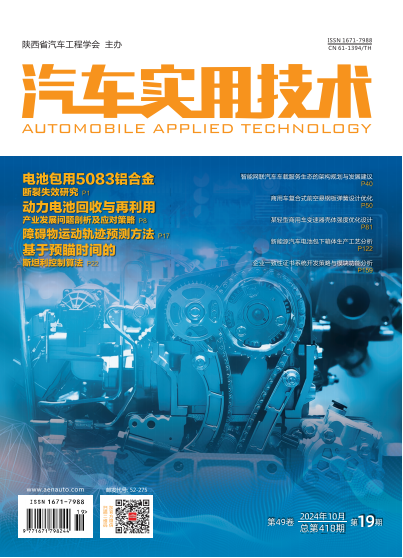|
|
The Stanley Control Algorithm Based on Preview Time
ZHAO Qi, XU Chang, JI Chenyu, YANG Feng, LIU Dong, LIU Liang
2024, 49(19):
22-28.
DOI: 10.16638/j.cnki.1671-7988.2024.019.005
The Stanley algorithm, which utilizes the front wheel center as the error reference point, Stanley-real vehicle" in hardware simulation and real vehicle test results, the overall error of the
"preview-Stanley" algorithm is smaller than that of the Stanley algorithm; On the other hand, by
comparing the lateral errors of "preview-Stanley-simulation" and "preview-Stanley-real vehicle", the
accuracy and fidelity of the created hardware-in-the-loop system are verified.
lacks the human-like forward-looking driving characteristic, resulting in frequent directional
corrections. Furthermore, the current autonomous driving simulation methodologies and platforms
are limited in their fidelity, making it difficult to effectively validate the practical impact of algorithm
improvements. In this paper, a "preview-Stanley" control algorithm combining the optimal preview
theory and Stanley control algorithm is proposed. Firstly, a virtual integrated navigation module and
a vehicle controller area network (CAN) communication module are created based on Carla
simulation platform. Then, the simulation platform of the autopilot domain controller-in-the-loop is
built, and the "preview-Stanley" algorithm is deployed in the autopilot domain controller and tested�in-the-loop. Finally, the real vehicle test under the real physical scene is verified. The results show
that, on the one hand, by comparing the lateral errors of "Stanley-real vehicle" and "preview-
References |
Related Articles |
Metrics
|

